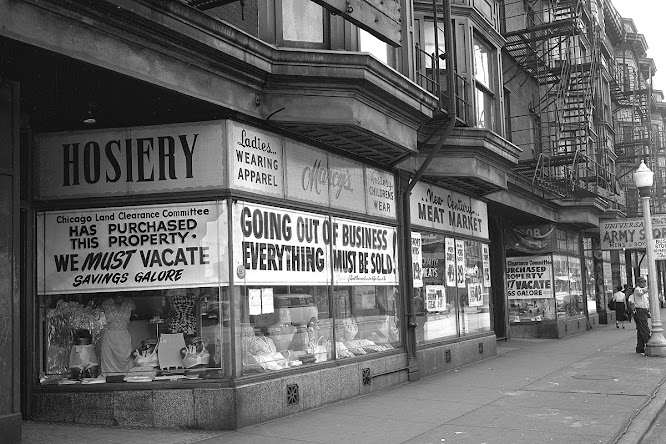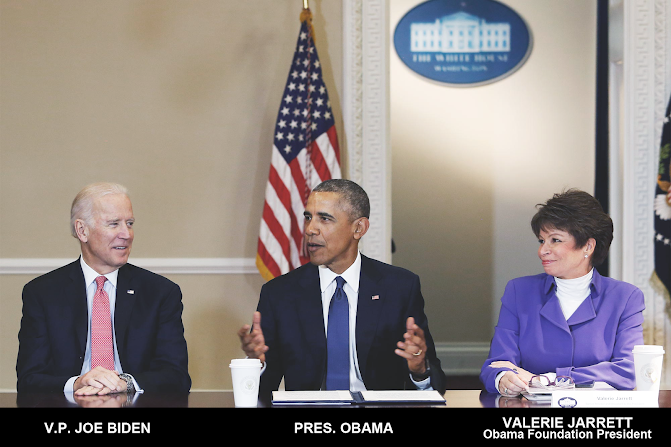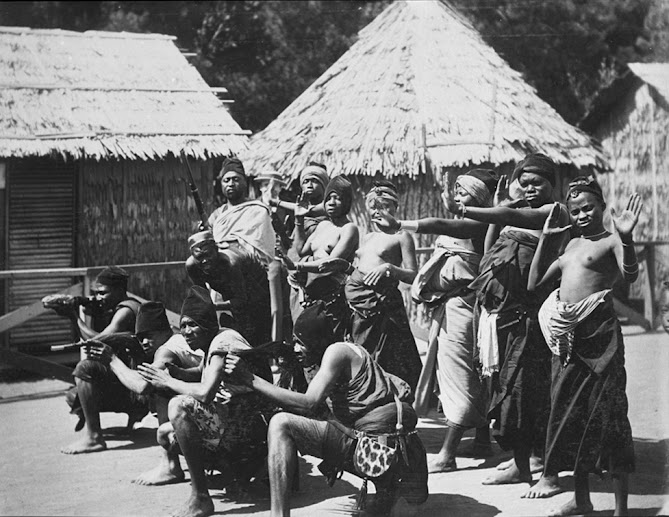The first Pullman sleeping car, the "Pioneer," was constructed in 1864. Although not an immediate success, the Pioneer received national attention when transporting President Lincoln's body from Washington D.C. to Springfield, Illinois.
 |
| President Abraham Lincoln's Pullman Funeral Railcar, 1865. |
The high demand for his cars led George Pullman to incorporate the Pullman Palace Car Company in February of 1867. It was first located in the third Tremont House (1850-1871) at 92 West Lake Street at Dearborn Street, Chicago.
Employing a primarily white workforce, the Pullman car transformed the experience of passenger railroad travel, setting a new standard. The company produced various cars, including sleeping, hotel, parlor, and dining cars. These were too expensive for railroad companies to purchase outright, so Pullman built his business model around leasing the cars and providing the employees necessary to serve passengers.
Demand for Pullman cars and a growing workforce led Pullman to the development of his company town.
Early in 1880, Pullman sent Colonel James to secretly purchase 4,000 acres of land between Lake Calumet and the Illinois Central rail line for $800,000 ($21.5 million today). The property was acquired from 75 different owners. The actual site of the town, including the Pullman shops, did not occupy more than 300 acres. Housing for workers was separated from the industrial areas and took shape primarily as row houses with streets in front and alleys in the rear for daily trash collection. The streets were lit and had fire hydrants.
The original Town of Pullman was completed in 1884. The first permanent resident, the Benson family, moved into the town on January 1, 1881, at 11109 South St. Lawrence Avenue. By April, the Pullman car shops were in operation, and by May, more than 350 people lived in Pullman.
Though Pullman provided a beautiful, sanitary, and orderly town for his workers and their families, George Pullman did not offer these accommodations freely because he believed that a person does not value those things for which they do not pay.
The average rent for three-room apartments was $8 to $8.50 ($172-$183 today). The rent for a five-room row house (with basement, bathroom, indoor toilet facilities, running water on two floors, gas, and sewers, advantages unheard of in other working-class areas of the city, was $18 per month ($387 today).
 |
| The Town of Pullman Row Houses. |
Larger homes for professionals and company officers began at $28 ($750 today). Rents were calculated to achieve a 6% return on the cost of the housing; however, the investment never earned more than 4½%.
 |
| The executive row was on 111th Street between St. Lawrence and Langley Avenues. Because the kind of housing and its location next to the plant were determined by status within the Pullman Company, these executive homes were nearest to the plant. It also made it possible for the executives to reach work without having to pass through the more modest residential areas to the south. Exterior and interior detail not found in many other Pullman houses made this row a showplace. The houses consisted of eight and nine rooms, renting for $28.00 to $50.00 ($750-$1,340 per month). All had a basement, several fireplaces, a dining room, and additional space in an attic. |
Housing in the Town of Pullman was somewhat more expensive than in other parts of the city, but the housing quality was far superior to that available elsewhere.
By the fall of 1883, the population of Pullman topped 8,000. Ethnically diverse, less than half of Pullman residents in 1885 were native-born, most being immigrants from Scandinavia, Germany, England, and Ireland.
By 1885, 30,000 trees bordered the streets and parks — mostly white elm, maple, ash, and linden. To supply enough landscaping material for the community, six acres of land on the shores of Lake Calumet between 113th and 114th Streets were used for nursery and greenhouse space.
The Town of Pullman is distinct in that nearly all of this housing stands today more or less as it did initially.
Not all workers at the Pullman factories lived in Pullman. Out of necessity or choice, many moved out to the surrounding neighborhoods that developed. These neighborhoods provided places for single-denomination houses of worship, saloons, and property ownership that were not possible in Pullman.
The town attracted visitors, and during the 1893 World's Columbian Exposition in Chicago, visitors from near and far came to marvel at the town. Pullman did, however, have its detractors; labor leaders were mistrustful of the decidedly capitalist scheme, while other capitalists saw it as inviting trouble and doubted it could possibly be as profitable as George Pullman intended. It wasn't. Returns on the town never reached the six percent threshold promised to its investors. When one of the partners in Procter & Gamble approached George Pullman for advice on building a model town for a Cincinnati soap factory, he advised against the idea.
As Chicago was on display in the 1893 World's Fair, the grip of a financial crisis (the Panic of 1893) was closing around the country in general and the railroad industry in particular. Despite the stimulus provided by travelers from around the nation flocking to the fair itself, railroads had become mismanaged and overbuilt. Pullman's exhibits in the Transportation Building at the World's Columbian Exposition helped spur fairgoers to visit the Pullman neighborhood, and most found cause to praise George Pullman's grand experiment.
The World's Fair visitors did not see the annoyance of Pullman workers and residents at company paternalism and the red tape that festered under the surface. As 1893 wore on, orders at the factory declined. George Pullman cut wages as demand for new passenger cars plummeted and the company's revenue dropped. A delegation of workers complained that wages had been cut but not rents at their company housing or other costs in the company town. Since rents were deducted from paychecks, workers were left with what amounted to starvation wages. Pullman refused to lower rents or go to arbitration.
The Pullman workers, who had formed a grievance committee to negotiate with the company, were getting nowhere. Though the newly formed American Railway Union (A.R.U.) leadership advised against it, a strike broke out at the Pullman factories on May 11,1894.
The timing was unfortunate since the company could financially withstand a work stoppage by relying on existing leases. Against the might of the Pullman Company, the cause of the workers seemed hopeless. The Pullman Company continued to resist any concessions in negotiations with the strikers, trying to wait them out. So the A.R.U. decided to take a genuinely injurious action against the Pullman Company on a national scale: a boycott of the handling of Pullman cars by all A.R.U. workers.
Because Pullman cars were in such wide use, the boycott crippled rail traffic nationwide. Workers across the country had also seen wage reductions and had cause to take action. The size and scope of the A.R.U. was threatening to railroads. In response, the General Managers' Association, an industry group representing 24 railroads with terminals in Chicago, organized measures against the boycott. Those who walked off the job were replaced with strikebreakers, and the association tried to sway public opinion against the boycott through methods such as encouraging Pullman cars to be hitched to mail cars to disrupt delivery.
Through the disruption of the United States mail, the federal government was given an opening for intervention in the boycott and strike. The government was uncomfortable with the labor actions in general, part of growing apprehension about the laboring classes by those in the propertied class during the economic hardship. An injunction against the boycott was secured on the grounds of the violent nature of the strike and the threat to interstate commerce, citing the Sherman Anti-Trust Law of 1890, which ironically had been adopted to combat monopoly by big business.
Going over the head of Illinois Governor John Peter Altgeld, thousands of U.S. marshals and U.S. Army troops were deployed in what seemed an oversized response to the disturbance. In Chicago, mob activity increased with the military presence, with members from Pullman but many more from other southside neighborhoods. Back in Pullman, the Pullman Company strikers' plight had been overshadowed on the national stage by the boycott. Fighting between the military and workers at rail yards in the Chicago area left dozens dead and more wounded. The injunction led to the jailing of key leaders, weakening the A.R.U. and the strike.
With the government working to the General Managers' Association's ends, Debs felt the only way to force the Pullman Company into arbitration was by reaching out to other labor groups to join in a general strike, but his efforts did not succeed. The boycott dissolved in mid-July and the A.R.U. was defeated. For refusal to obey the injunction, Debs and others in the A.R.U. were indicted for contempt. In late July, President Grover Cleveland appointed a commission to investigate the strike and boycott.
Though public sentiment had been against the boycott, George Pullman was roundly criticized for the policies that led to the strike and his refusal to enter into arbitration with his workers. The situation for those in Pullman remained dire, and while little effort was made to evict residents or collect rent in arrears, destitution was widespread. However, in his testimony before the investigative commission, George Pullman defended his model town and his decisions, though they had led to a strike that ultimately damaged the company and the strikers and tarnished his image irreparably.
If George Pullman entertained any doubts about the wisdom of continuing the company town experiment, they were not reflected in his actions. Company ownership and concern with the town's appearance continued under Pullman's direction until he died in 1897. Tons of steel and concrete were placed over his casket to prevent labor radicals from desecrating the grave.
The impacts of the Pullman Strike were national in scope. As a massive and truly national strike, it demonstrated the power of national labor and forced consideration of labor action and corporate paternalism. Legally, the injunction against the strike affirmed the broad power of the federal government to ensure the free flow of interstate commerce, essentially making national strikes illegal.
In October 1898, the Illinois Supreme Court ordered the Pullman Company to sell all non-industrial landholdings. Some holdings, such as the brickyard, sold quickly. The Illinois Central railroad had owned the right of way past the front of the factory; Lake Vista was filled, and new tracks and a road were installed. The company was granted a deferment on its deadline to sell most of the town, which mostly changed hands in 1907, with residents given the first option to buy.
 |
| When owner George Pullman died in 1897, Robert Todd Lincoln, Abraham's son, filled in as the acting president. His role transformed into a permanent one in 1901. He resigned in 1911, citing health concerns. Lincoln remained involved as the chairman of the board, a position he held until 1922. |
The Pullman Company, no longer in the landlord business, returned to success under its second president, Robert Todd Lincoln. Union activity returned to Pullman, and just ten years after the explosive strike in 1904, the company locked out union workers, trouncing them without larger incident. In 1900, the company began using metal frames for its cars, and by 1908, the company had converted to all-steel construction. Over $5 million was invested in remodeling and enlarging the shops. As the company succeeded in the 20th century, the town it once supported floundered. As the housing stock uniformly aged and other neighborhoods grew around it, Pullman lost population and its community identity.
The 1894 Strike was not the last time the Pullman Company would be the epicenter of a contentious labor issue. In the early 20th century, the Brotherhood of Sleeping Car Porters (BSCP) strove for recognition of their union, a victory whose impact went beyond Pullman Porters to the Negro society on the whole.
The operation of railroads across the country relied on different classes of workers: conductors and engineers in the "operating trades," construction and laborers, and service positions like porters, dining car waiters, and station ushers. The classes of railway workers were segmented along racial and ethnic lines. Workers in the railroad trades began forming "brotherhoods" in the 1860s and 1870s to respond to health and safety issues. Many of these brotherhoods codified these racial divisions, barring non-whites from membership. In general, Negroes were confined to the service positions.
Thus it was in the service positions that black trade unionism on the railroads began. The Brotherhood of Sleeping Car Porters was founded in 1925 in New York City, and for four decades, was led by A. Philip Randolph. From outside the Pullman Company, he was not susceptible to their reprisals, and his powerful public speaking and work editing the Harlem, New York monthly The Messenger helped prepare him for the task. Porters comprised 44 percent of the Pullman rail car operation workforce, and Pullman was the nation's largest employer of Negros. The porters, owing in part to their cosmopolitan experience, held positions of status and respect in the black community. The union faced tough opposition from a traditionally racist industry, an anti-union corporation, and initially from some in the black community. Many members of the Negro community feared economic reprisals since the Pullman Company offered jobs to Negroes and advertised in the black press.
In 1937, the Pullman Company signed a contract with the BSCP, leading to higher salaries, better job security, and increased protection of workers' rights through grievance procedures. It was the first major labor agreement between an Negro union and a corporation. The NAACP's Crisis credited the victory for broad influence, saying, "As important as is this lucrative contract as a labor victory to the Pullman porters, it is even more important to the Negro race as a whole, from the point of view of the Negro's uphill climb for respect, recognition and influence, and economic advance." The BSCP also functioned as a civil rights organization through the 1960s.
The Pullman Company factories consolidated and downsized through the 1940s, and the railroads discontinued sleeping car service in 1969. For short trips, cars and highway travel eclipsed passenger rail, and commercial aviation eclipsed passenger rail for long-distance travel. Although the company split apart and rail travel itself faded from prominence, the Pullman Company and the labor unrest it ignited remained prominent in the American memory of industrial and labor history. The causes of those developments and upheavals can still be seen in the architecture and landscape of Pullman's model town.
Compiled by Dr. Neil Gale, Ph.D.
The Town of Pullman Street Name Changes.
Pullman's avenues were initially named after inventors. Chicago annexed the Town of Pullman in 1907. In 1909, the street names should have been changed along with the rest of the city. However, many of the old names were still in use up until the 1930s.
Corliss Avenue is named after the inventor of the "Corliss Engine," George Henry Corliss (1817-1888). The Corliss Steam Engine originally powered the Pullman Works and provided steam heat for the public buildings in the town.
Maryland Avenue is named for the state of Maryland. The state, in turn, is named after the wife of King Charles I, Henrietta Maria. Charles was king at the time of the founding of the province in 1634. Maryland was originally named Ericsson Avenue (spelling varied on different maps). Ericsson is named after John Ericsson (1803-1889), inventor and engineer. He would have captured Mr. Pullman's attention because he developed and built the first ironclad, the U.S.S. Monitor, which famously saw action in the American Civil War.
Doty Avenue honors Duane Doty, original Pullman town manager.
Bessemer Avenue is a street that no longer exists in North Pullman, named after Henry Bessemer (1813-1898), the inventor of a revolutionary method of making steel. His system is still in use today.
Langley Avenue was probably named for Esther Langley, a relative of real estate developer, entrepreneur, and manufacturer Sivert Tobias Gunderson. Langley was originally Fulton Avenue, named for Robert Fulton (1765-1815). Fulton was an American engineer and inventor who developed the first commercially viable steamboat.
Champlain Avenue honors Samuel De Champlain (1567-1635), a French explorer and navigator who founded the city of Quebec. Champlain was originally Stephenson Avenue, named for George Stephenson (1781-1848). Stephenson Avenue occupied pride of place in the center spine of the town because the man the avenue honors built the first public railway line. All railways today are descended from this first railway; he also developed the standard gauge of railways (4 feet 8 and a half inches) still in use today.
St. Lawrence Avenue is named after the St. Lawrence River, which connects the Great Lakes to the Atlantic Ocean. St. Lawrence is named, in turn, after the early Christian Martyr St. Lawrence (225-258 AD), deacon of Rome. He was killed in the persecution of Christians by Emporer Valerian by roasting him to death over an open grate. Before 1907, St. Lawrence was Watt Avenue. James Watt (1736-1819) invented, among many other things, the first modern and efficient steam engine.
Forrestville Avenue - Forrestville was a small town on the south side in the 1850s. It was located near Hyde Park. The street name honors this now-vanished town. Forrestville was originally named Morse, named for Samuel Morse (1791-1872), developer of the single-wire telegraph system and, famously, Morse code.
Cottage Grove Avenue has a long history. Charles Cleaver (1814-1893) developed a suburb south of Chicago on the Illinois Central line called Cleaverville in the 1850s. Cleaverville eventually became the Oakland neighborhood north and west of Hyde Park. Cleaver named the street after a grove of shady trees that surrounded a cottage in his development. The grove was a popular meeting spot for early settlers.


























